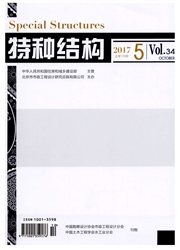

 中文摘要:
中文摘要:
风力发电近年发展迅猛,中国是世界第一风能大国,安装有大量风力发电机组。风力发电机组受到风荷载和地震等动力作用,通常采用有限元方法建立风力发电机组的动力学模型。由于叶片参数不易获得,有限元建模可将叶轮和机舱质量集中在塔架顸部(模型1),或采用等截面均质梁模拟叶片(模型2)。本文基于某65kW风力发电机组试验数据,分析了两种模型动力特性的差异。结果表明:模型1的1、2阶塔架频率与试验数据误差在10%以内,模型2可进一步减小误差。但叶片刚度对风力发电机组频率影响较大,如果叶片刚度选择不当,会造成较大误差。模型1和模型2的1阶塔架模态几乎相同,但2阶模态存在一定差异。
 英文摘要:
英文摘要:
Wind energy has been developing very fast in recent years and China is the leading country with a great number of wind turbines assembled..4 wind turbine is subjected to the dynamic wind load and the seismic action and the finite element method is usually adopted to create the dynamic model for wind turbine. Since it is difficult to obtain the blade parameters, so the first method is to concentrate the rotor and nacelle masses on the tower top (model 1), and the second method is to apply a uniform cross-section beam to simulate the blades (model 2). In this paper, the difference of these two models in dynamic characteristics is analyzed, based on the experimental data of a 65kW wind turbine. The results indicate that the errors of model 1 with the test value on the first and second tower frequency are less than 10% and the errors of model 2 are even lower. But the stiffness of the blades affects the frequency of the wind turbine obviously, which may causes a significant error unless an appropriate stiffness is selected. The first tower modes of model i and model 2 are almost the same while the second tower modes of the two models exhibit a certain difference.
 同期刊论文项目
同期刊论文项目
 同项目期刊论文
同项目期刊论文
 期刊信息
期刊信息
